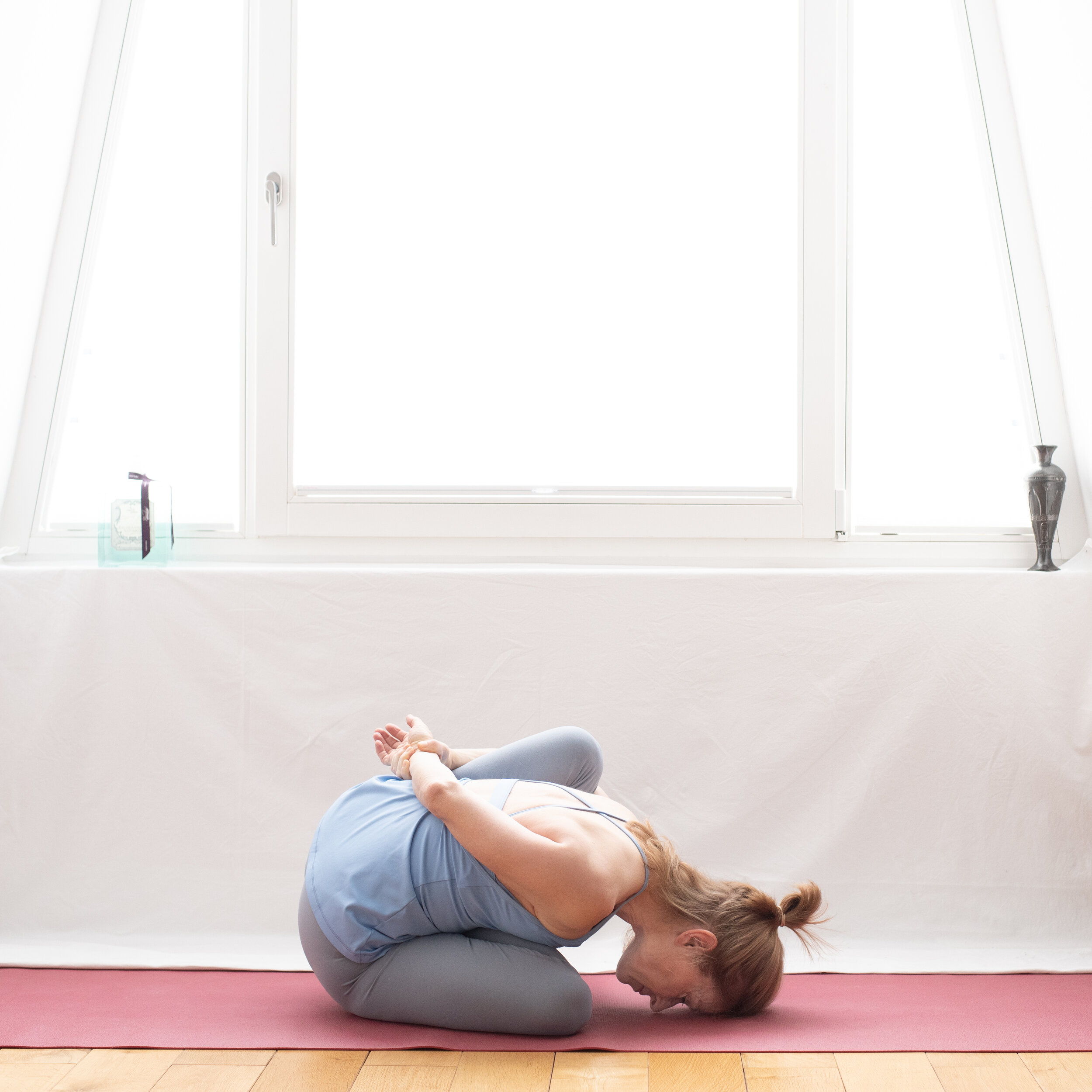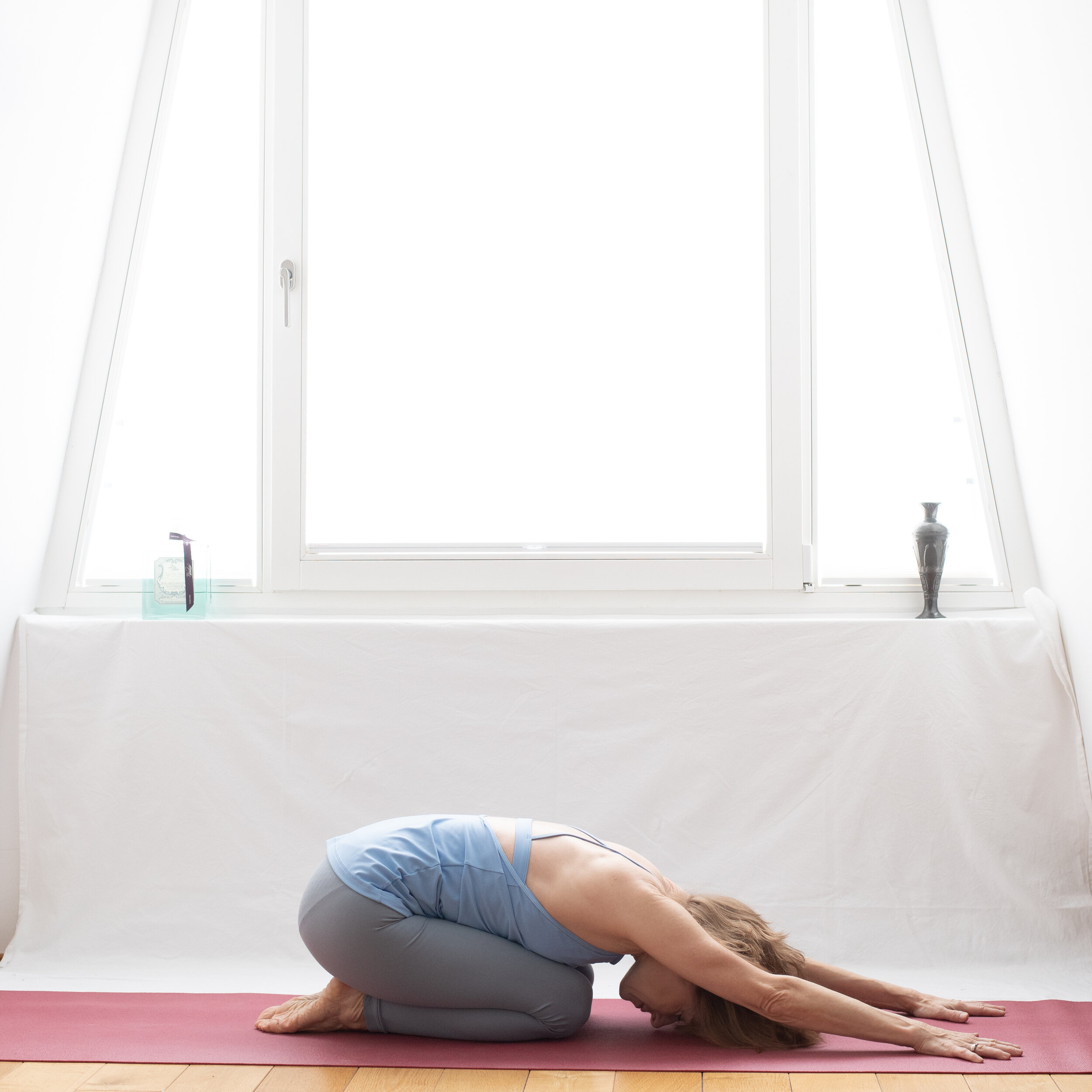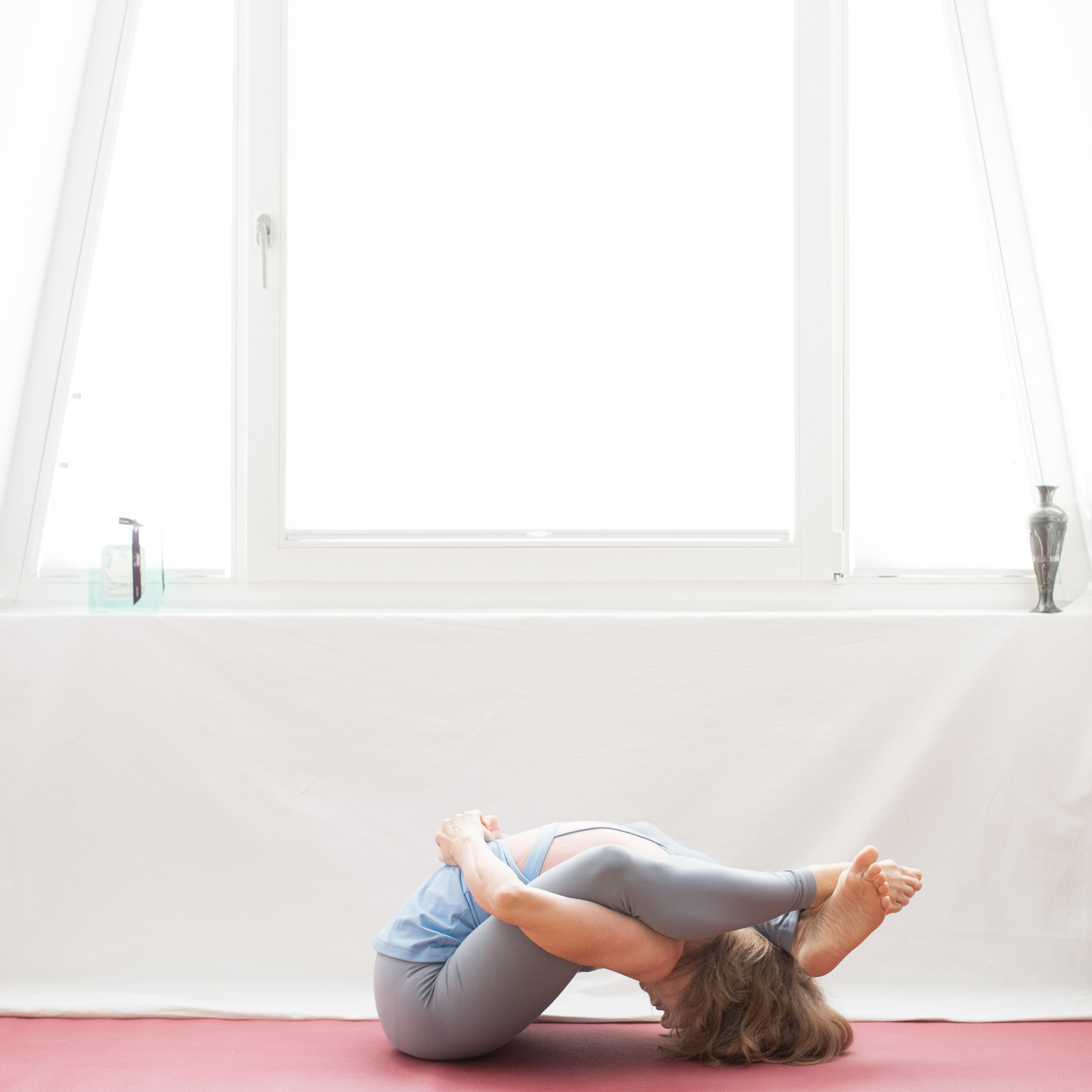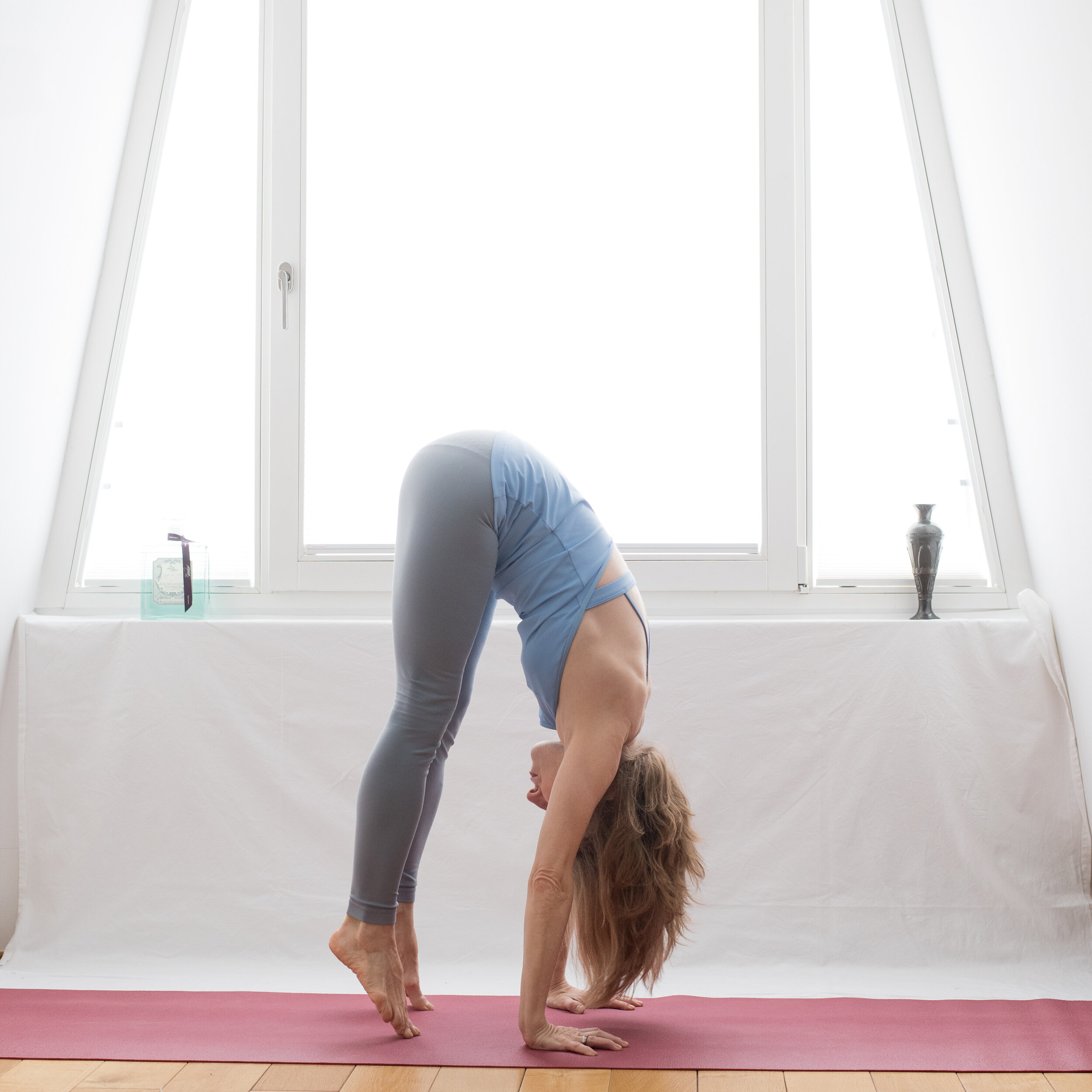Marichyasana B, left side, Dec 2020
Yesterday I had time to go through my anatomy books. One of the best is ‘Functional Anatomy of Yoga’ * by David Keil. Davis is a practitioner of yoga himself and he has profound knowledge of anatomy. I read the part about forward bending.
I think it can help to understand that what we call hips is the pelvic and the femur. This is the joint we move when we bend forward. That is if we move forward from the hips. It’s usually not recommended to bow the back to stretch forward in order to reach the toes with the hands in paschimottanasana for instance. With a rounded back the hip joint remains unmoved, yet the goal is to enlarge the movement of the hips. Another gaol is to stretch the hamstrings and further muscles that are involved.
It’s worth to have a look of the pelvic and femur. Many pictures can be found online. All pictures show that the hip joint allows to move the leg in all possible directions. I dare to say that ninety percent of the skeletons walking around on this globe are able to put the leg behind the head. Most of us have the potential to do this. Most of us only don’t try it.
Around the bones are the muscles. They might be strong and not stretched at all. That’s the work we yogis do. We stretch the tight muscles. and enlarge the movement of the joints.
David Keil also wrote that it makes not so much sense to engage the abdomen when bending forward because this causes that the back will create a curve. The goal is to keep the back almost straight. I always thought that I engage the abdomen to get excess body fat out of the way. But, no. Today I experimented. Engaging the pelvis floor has no influence on the back, yet engaging the abdomen has. It is counterproductive to what one wants in forward bending asanas.
David Keil’s book is an excellent reference.
Knowing the functioning of our body, our joints and muscles can be useful. It can build confidence. Knowing that the ‘hips’ allow to put the leg behind the head for most people alters the view on those asanas. The asanas are no more considered as extreme. These movements are within our possibilities. We must only exercise them.
*This site contains affiliate links which earn a fee per purchase.






